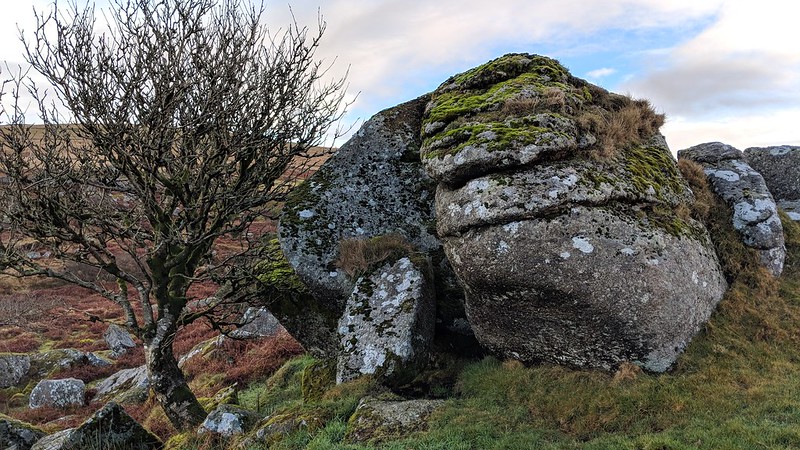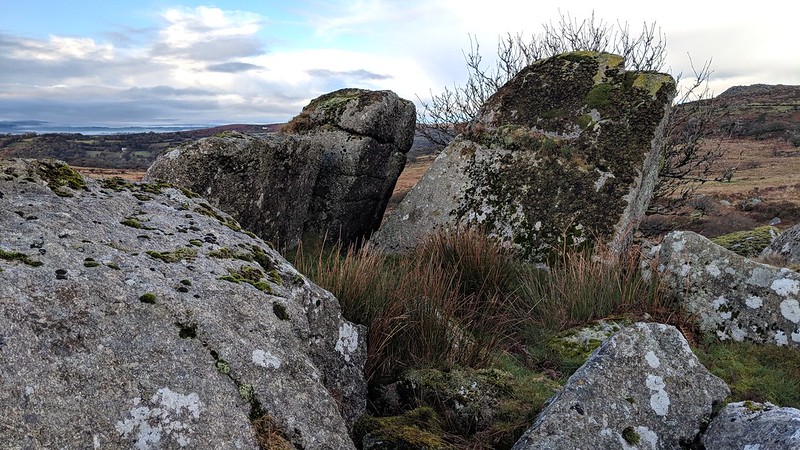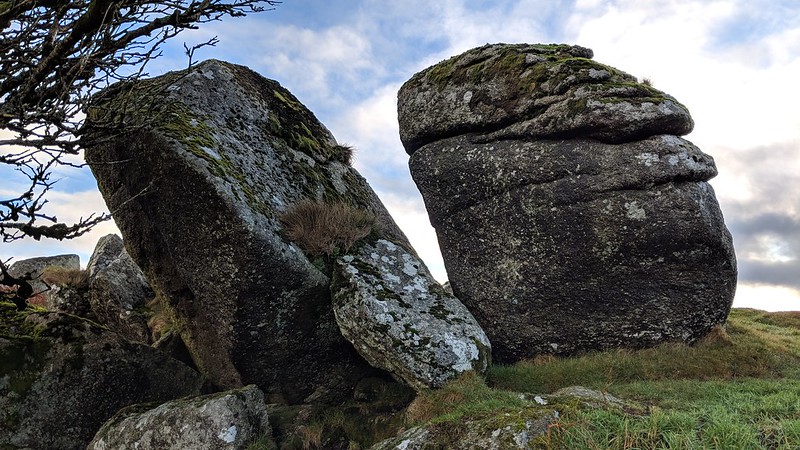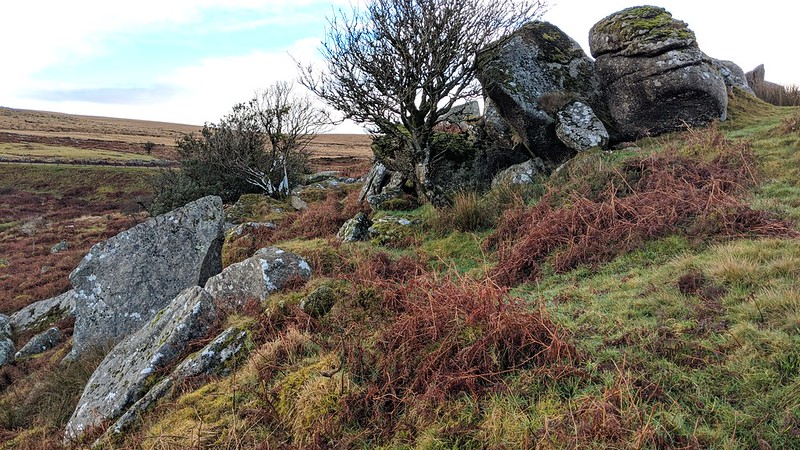TORS OF DARTMOOR
a database of both lesser- & well-known rocks and outcrops
Yes Tor (Walkhampton)Yestor, Easter, East Tor, Fur Tor (disputed)  A lesser known tor, and one of some controversy; there are two distinct outcrops, known as Yes Tor and Fur Tor, sitting either side of the disused Princetown railtrack whose locations had been reversed due to conflicting accounts. There had long been the argument that 'Yes' is a corruption of 'East', citing it as the higher outcrop, however, the Tors of Dartmoor team have researched further and have found evidence (documented below) that conclusively places Yes Tor to the west.  It is Eric Hemery who appears to have initially caused the confusion giving contradictory descriptions of the location of Fur Tor in two of his books. It is 'High Dartmoor', the more referenced of his books, that makes the error but one of the most compelling pieces of evidence for the location of Yes Tor is actually a grainy photograph of Fur Tor in 'Walking the Dartmoor Railroads' which is captioned, "...Fur Tor (Walkham) is top right" clearly showing Fur as the higher outcrop. This is further supported by the lesser known 3rd edition of William Crossing's 'Guide to Dartmoor' from 1914 (page 14) where he is the first it seems to mention the name of Fur Tor for the higher rocks; "Passing Routrendle the line sweeps out around Inga Tor, below which the ground is rather marshy, and then making a great bend to the right runs up to Yes Tor Green. Here, at the turn, the old tramroad, which made a rather long sweep, will be noticed, with the little bridge that carried it over the brook. This is just below the pile known as Fur Tor."  We also have the Tithe Apportionment Transcription of the Parish of Walkhampton that, whilst not showing the outcrops, names the enclosures to the west of the railtrack as "Yester alias Easter Green". Add to this, the 1905 OS 25 inch map marks 'Yestor' as being to the west of the railway too, although this could be argued to only be attributed to the farm. Steve Jenkins, in 'Dartmoor Magazine', also argues quite well about which name is which and provides some plausible explanations for them. Interestingly, he shows a small section of what we are led to believe is the Harvey's Map for the area that clearly shows Fur Tor above the rail track but Yes Tor is identified some way to the north of here, and not below the railway bridge, where the rocks actually are, an anomaly that has since been corrected on later maps. Finally, the Tors of Dartmoor team organised an on the ground visit to the site on December 27th 2019 in order to match Hemery's photograph to the landscape and unanimously confirm that Yes Tor is the lower pile of the two set either side of the old railbed. 
| ||||||||||||||||||||||||||||||